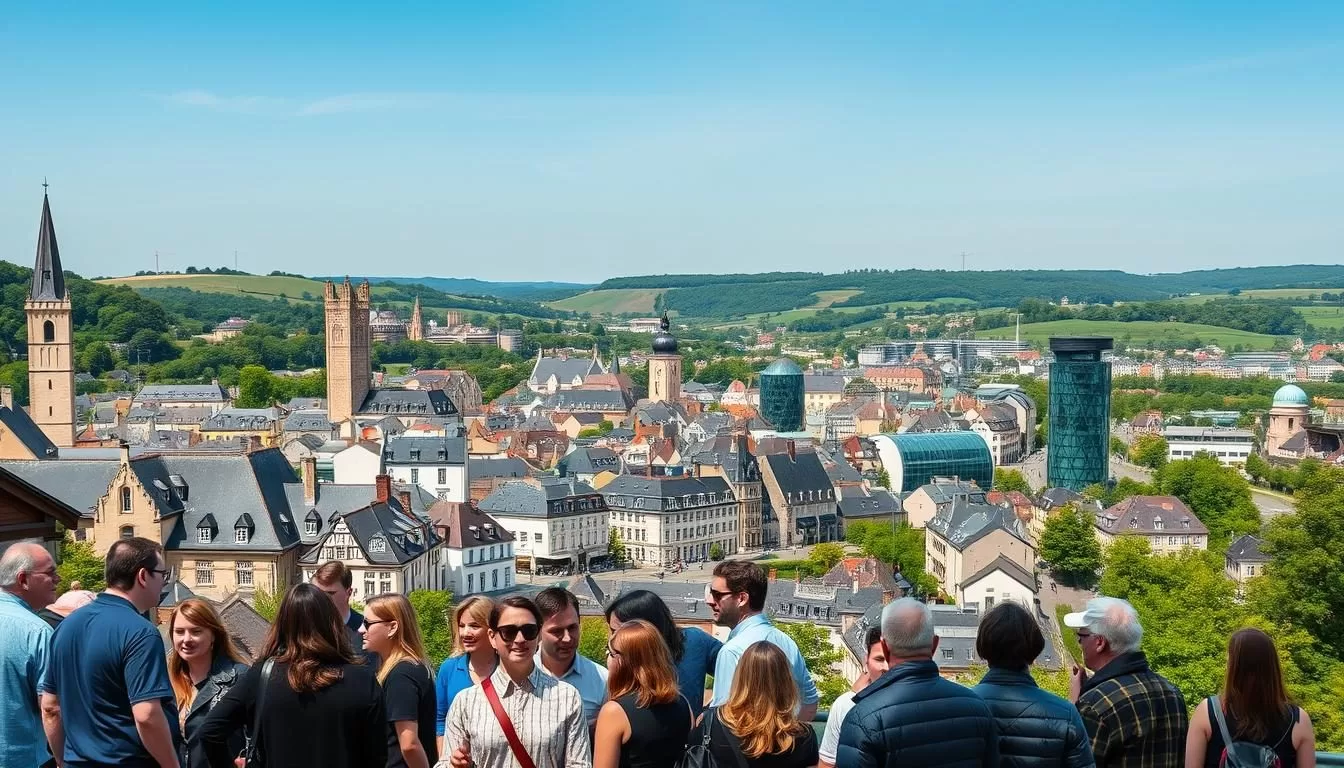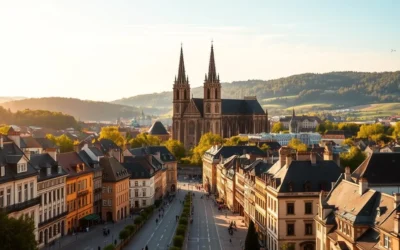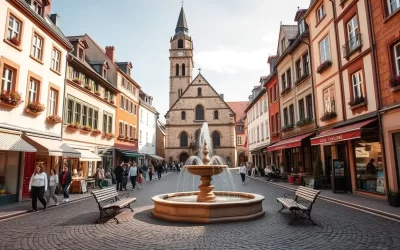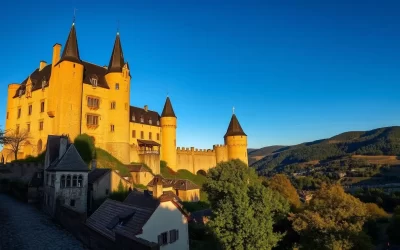Imagine living in a place where multiple languages shape your daily life. This is the reality for many in this culturally rich country. With three official languages—Luxembourgish, French, and German—communication here is as diverse as its people. These languages are not just tools for conversation; they are woven into the fabric of national identity.
In schools, children start learning in Luxembourgish, then switch to German and French as they progress. This approach ensures fluency across multiple languages from an early age. By secondary school, French often becomes the primary medium of instruction, especially in science subjects.
The population here is remarkably multilingual. Over 90% of residents can speak French, while nearly 80% are proficient in German. Luxembourgish remains the most common native language spoken at home. This linguistic diversity extends to media, business, and even casual conversations, making it a truly unique place to live or visit.
Exploring Luxembourg’s Multilingual Heritage
Discover how centuries of cultural exchange shaped a unique linguistic identity. This small yet vibrant nation has a rich history where German and French influences played pivotal roles. Over time, these influences gave birth to a distinct dialect that evolved into the Luxembourgish language. Today, this spoken language stands as a testament to the country’s resilience and adaptability.
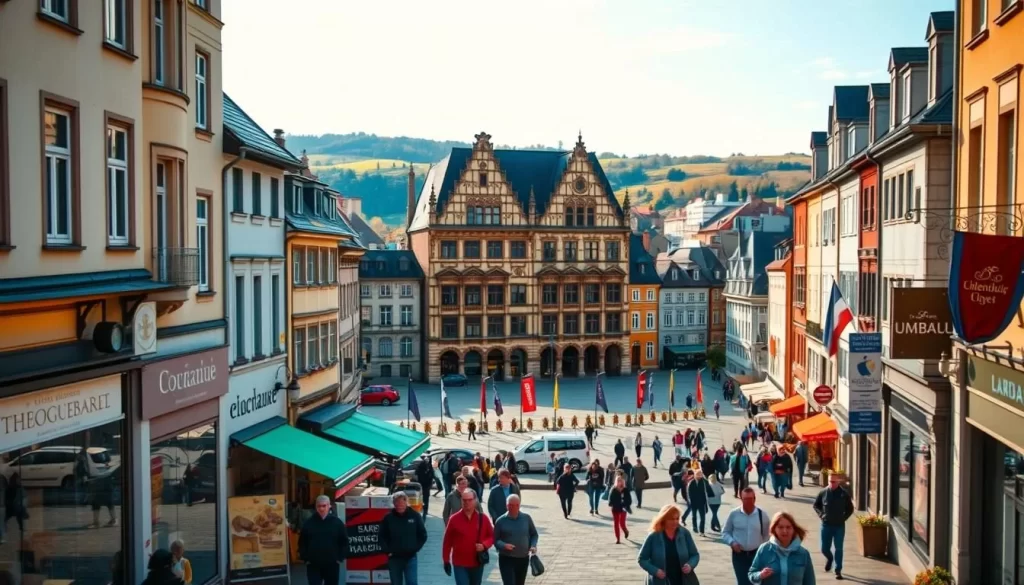
Historical Background and Evolution
For centuries, the region was under the rule of neighboring powers, including German and French rulers. This dual influence left a lasting mark on the linguistic landscape. While German was dominant in administration and education, French became the language of diplomacy and culture. It wasn’t until 1984 that Luxembourgish was officially recognized as a national language.
The Luxembourgish language is a fascinating blend of German and French, with unique words and expressions that set it apart. For example, it retains elements of Middle High German while incorporating French vocabulary. This fusion reflects the country’s historical ties to both linguistic traditions.
Impact on National Identity and Culture
The interplay between French German influences has deeply shaped the nation’s identity. Being bilingual or even trilingual is a way of life here. This linguistic diversity fosters a sense of unity and pride among residents. It also enriches cultural expressions, from literature to music and festivals.
Today, over 90% of the population speaks Luxembourgish as their native language. This widespread use reinforces its role as a cornerstone of national identity. Whether in daily conversations or formal settings, the spoken language bridges the past and present, connecting generations through shared heritage.
Luxembourg: Official and widely spoken languages
Navigating daily life in a multilingual environment can be both fascinating and complex. In this country, administrative and legal systems are designed to ensure clarity and fairness for all. The 1984 Languages Law plays a pivotal role in this process, allowing citizens to interact with officials in Luxembourgish, French, or German.

Administrative procedures here are highly inclusive. Officials strive to respond in the used language of the applicant, whether it’s Luxembourgish, French, or German. This approach ensures that every resident feels understood and respected.
In legal affairs, the choice of language spoken can significantly impact outcomes. French holds primary authenticity in legislative documents, but flexibility remains a cornerstone of the system. This adaptability fosters trust and accessibility in legal contexts.
Media and official documentation reflect this trilingual usage. Whether it’s an article or a public announcement, the use of multiple languages ensures broad comprehension. This practice not only supports inclusivity but also strengthens national unity.
Ultimately, the administrative framework here is a testament to the value placed on linguistic diversity. By accommodating multiple languages, the system ensures fairness and accessibility for all residents.
Language Diversity in Education and Media
From classrooms to newsrooms, language diversity plays a central role here. Schools and media outlets are designed to reflect the multilingual nature of this society. This approach ensures that everyone, from students to readers, can engage with content in their preferred language.
Language Learning in Schools
In schools, students begin their education in Luxembourgish, followed by German and French. This structured approach helps them develop fluency in multiple languages from an early age. By the time they reach secondary school, French often becomes the primary language of instruction, especially in subjects like science and mathematics.
Language courses are carefully designed to support this multilingual journey. Early exposure to different languages fosters confidence and competence. This foundation prepares students for a globalized world, where multilingual skills are highly valued.
Trends in Media and Print Consumption
Media outlets here mirror the linguistic diversity of the population. Radio, TV, and online platforms frequently offer content in Luxembourgish, French, and German. This ensures that everyone can access information in their preferred language.
Print media and websites also cater to this diversity. Newspapers and magazines often publish articles in multiple languages. This practice not only broadens their audience but also strengthens cultural connections. Whether it’s a local news website or a radio station, the focus is on inclusivity and accessibility.
This multilingual approach in media and education highlights the importance of language in shaping identity and fostering unity. It’s a testament to the value placed on diversity and inclusion in every aspect of life.
Global Communication and Business Language Trends
In today’s globalized world, effective communication bridges cultures and drives success. This is especially true in environments where multiple languages coexist. For professionals, mastering a different language can open doors to new opportunities and foster stronger relationships.

English as the Lingua Franca
English has become the universal language of business. It’s the preferred choice for international meetings, negotiations, and commerce. In many cases, it serves as a common ground for professionals from diverse backgrounds.
For example, in financial sectors, English is often used alongside traditional languages to ensure clarity. This approach helps institutions communicate effectively with global partners.
Business, Finance, and Multicultural Interaction
In multicultural settings, clear communication is key. Financial institutions often rely on multilingual teams to navigate complex transactions. This ensures that every person involved feels understood and valued.
Here’s how businesses adapt to these trends:
- Promoting language training for employees.
- Using translation services for official documents.
- Encouraging cultural awareness programs.
“Language is the road map of a culture. It tells you where its people come from and where they are going.”
These practices not only enhance efficiency but also strengthen relationships with international clients. For more insights on multilingual strategies, visit this resource.
| Language | Role in Business |
|---|---|
| English | Global communication and commerce |
| French | Diplomacy and legal affairs |
| German | Financial and technical sectors |
Ultimately, the ability to adapt to different language needs is a hallmark of successful institutions. It fosters inclusivity and drives innovation in a rapidly changing world.
Everyday Communication and Cultural Life
Step into a world where language shapes every interaction. In this vibrant country, daily conversations are a blend of cultures and traditions. Whether you’re chatting with a neighbor or exploring a local market, the linguistic diversity is palpable.
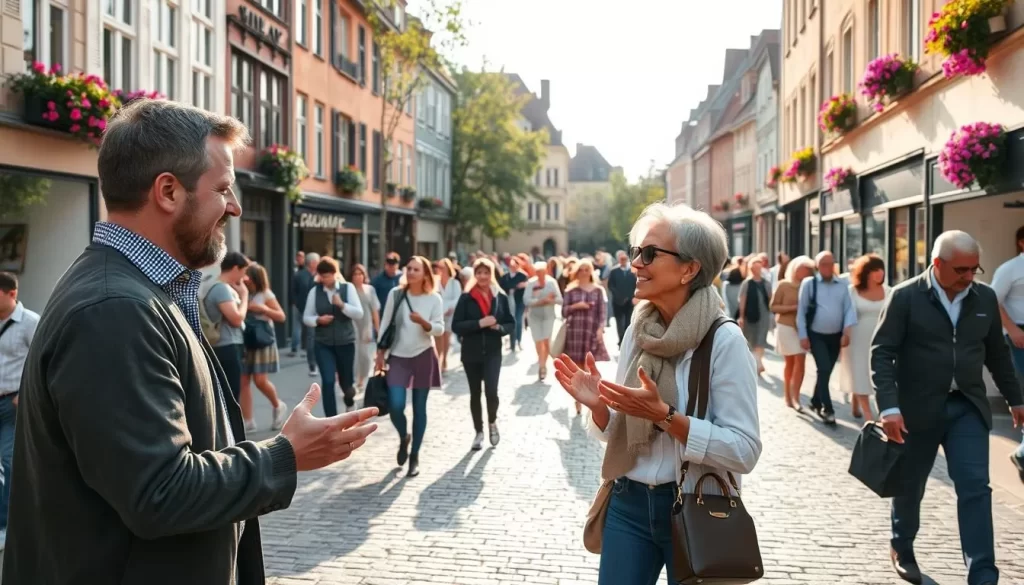
Social Interactions and Community Engagement
Social interactions here are enriched by the use of multiple languages. Luxembourgish is often the mother tongue for casual conversations, while French and German dominate professional settings. This mix fosters a sense of unity and inclusivity within the community.
Cultural events, like festivals and theater performances, frequently utilize multiple languages. This approach ensures everyone feels included, whether they’re a resident or a visitor. It’s a testament to the country’s commitment to diversity.
Tourism and Multilingual Adaptation
Tourism thrives here thanks to the multilingual approach. From guided tours to restaurant menus, services are often available in French, German, and English. This adaptability makes it easy for international visitors to navigate and enjoy their stay.
Hotels, museums, and even public transport systems cater to a global audience. This inclusivity not only enhances the visitor experience but also boosts the local economy.
Cultural Expressions and Initiatives
Cultural life here is a celebration of linguistic diversity. Cinema, theater, and music often incorporate multiple languages, reflecting the country’s rich heritage. Community initiatives, like language exchange programs, further strengthen bonds among residents.
These efforts highlight the pride people take in their german luxembourgish roots while embracing global influences. It’s a unique blend that defines the country’s identity.
| Language | Role in Daily Life |
|---|---|
| Luxembourgish | Casual conversations, cultural events |
| French | Professional settings, tourism |
| German | Education, media |
Everyday communication here is a reflection of the country’s multilingual heritage. From casual chats to community events, language plays a central role in shaping life and fostering unity. To learn more about how languages are integrated into education, visit this resource.
Conclusion
Living in a place where multiple tongues coexist shapes a unique cultural identity. This country’s three official languages—Luxembourgish, French, and German—are deeply integrated into daily life. From home conversations to professional settings, this linguistic diversity fosters unity and inclusivity.
Educational systems and media outlets reflect this multilingual approach. Schools teach in multiple languages, preparing students for global opportunities. Media, including radio and television, broadcasts in various languages, ensuring everyone stays informed.
This linguistic model strengthens communication across borders and within communities. It also highlights the importance of preserving cultural heritage while embracing global connections.
Ultimately, the interplay of languages here serves as a blueprint for balancing tradition and international engagement. It’s a testament to the power of linguistic diversity in shaping a vibrant, inclusive society.
The above is subject to change.
Check back often to TRAVEL.COM for the latest travel tips and deals.
